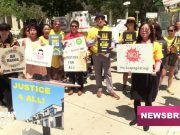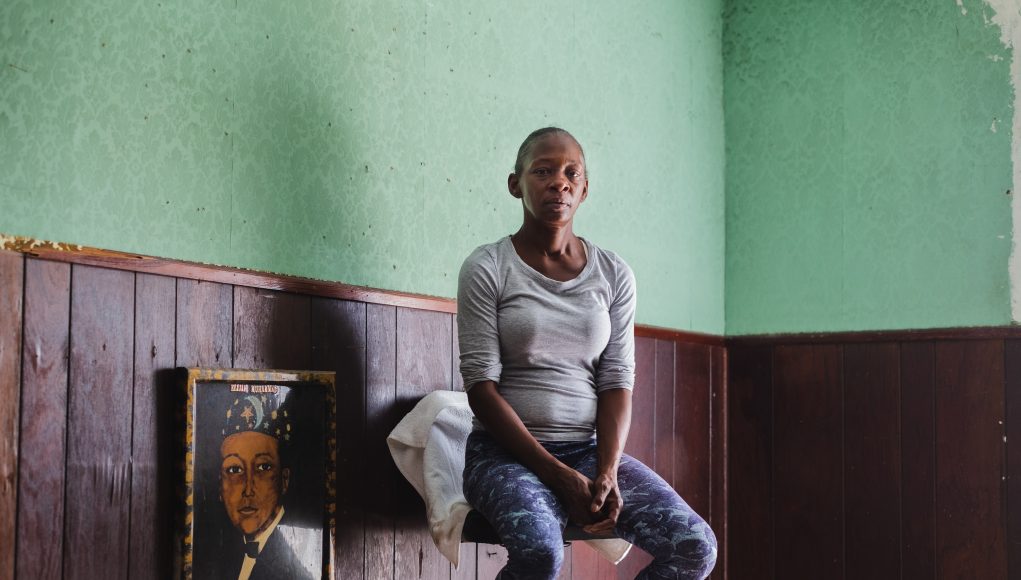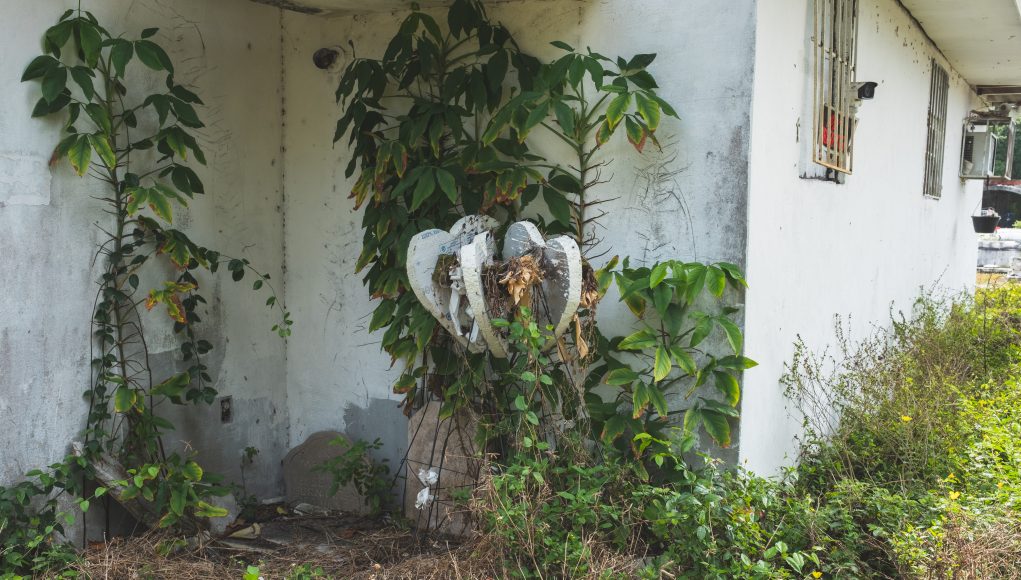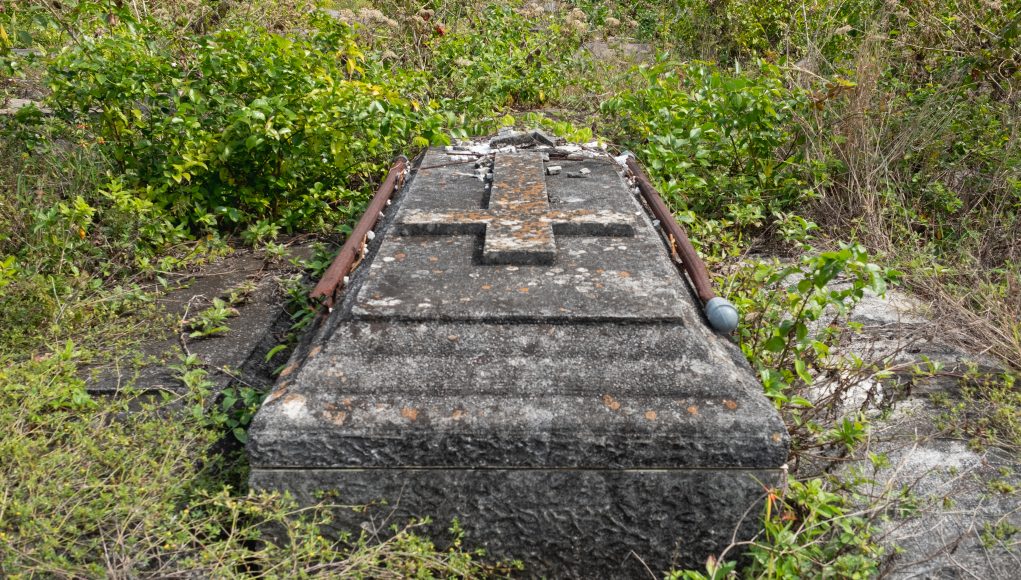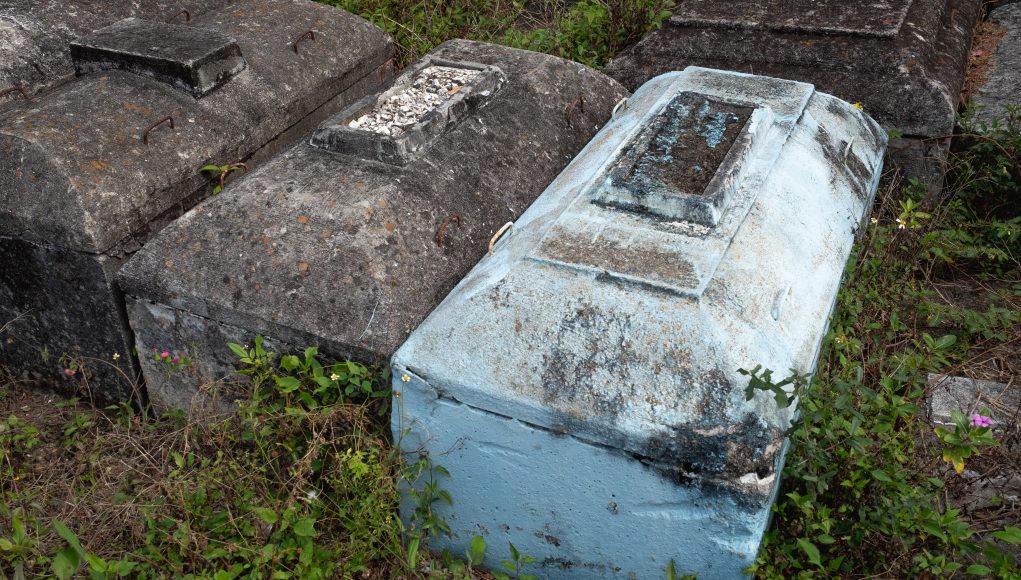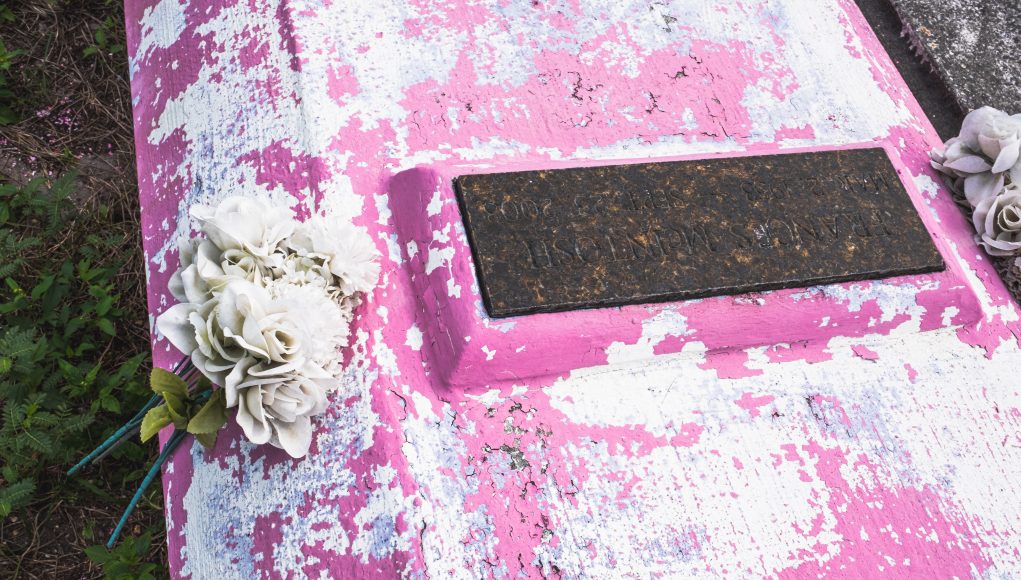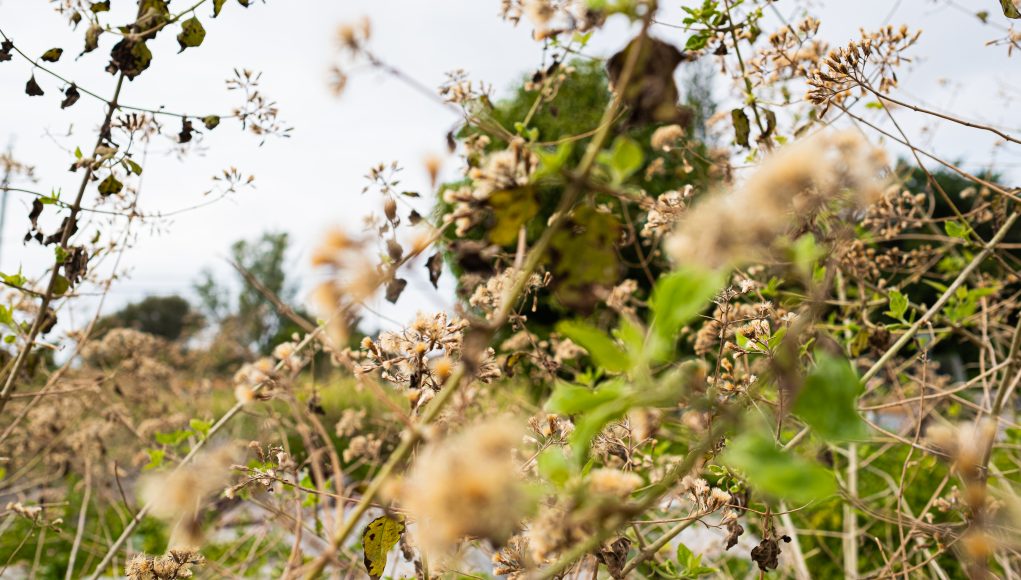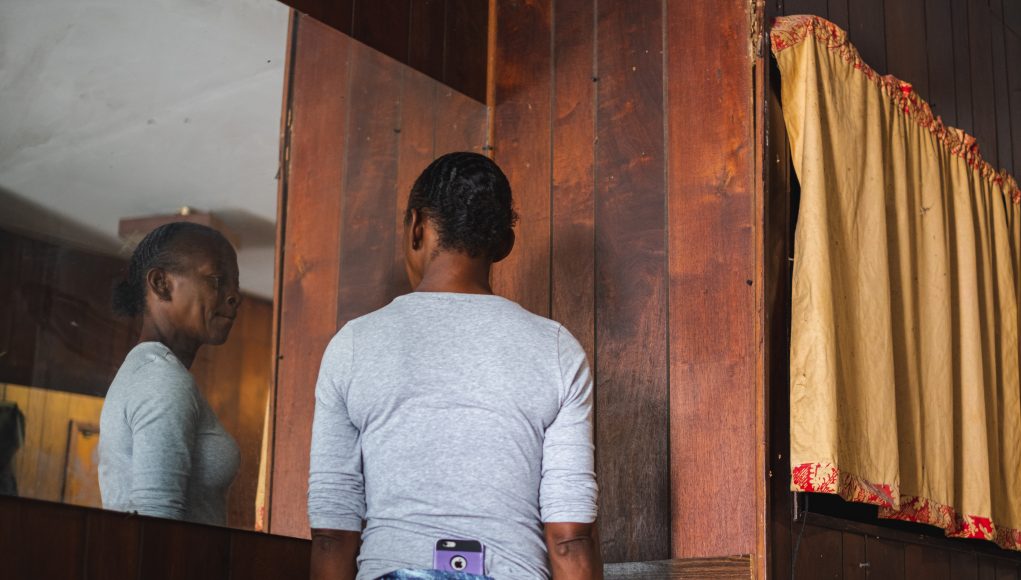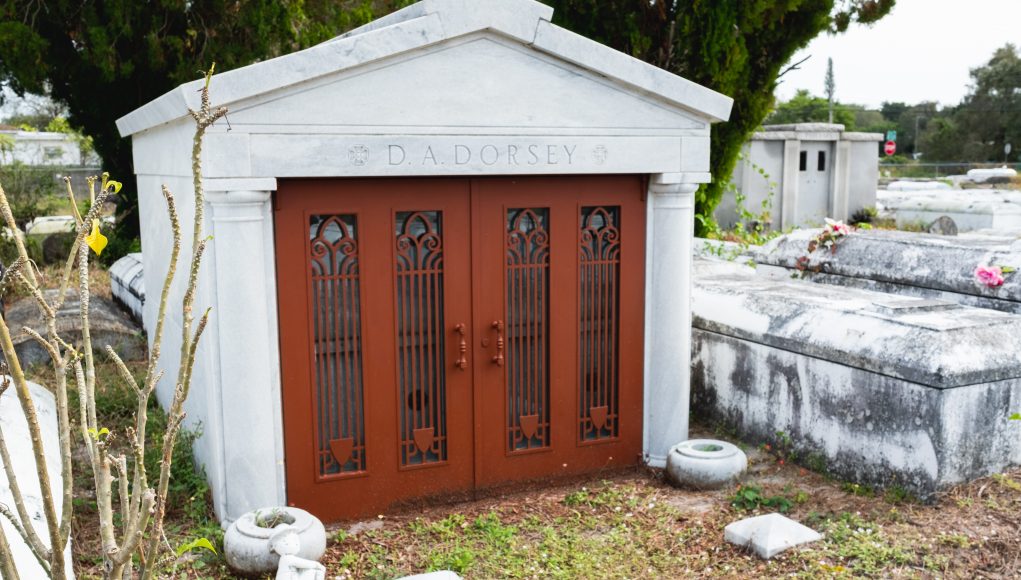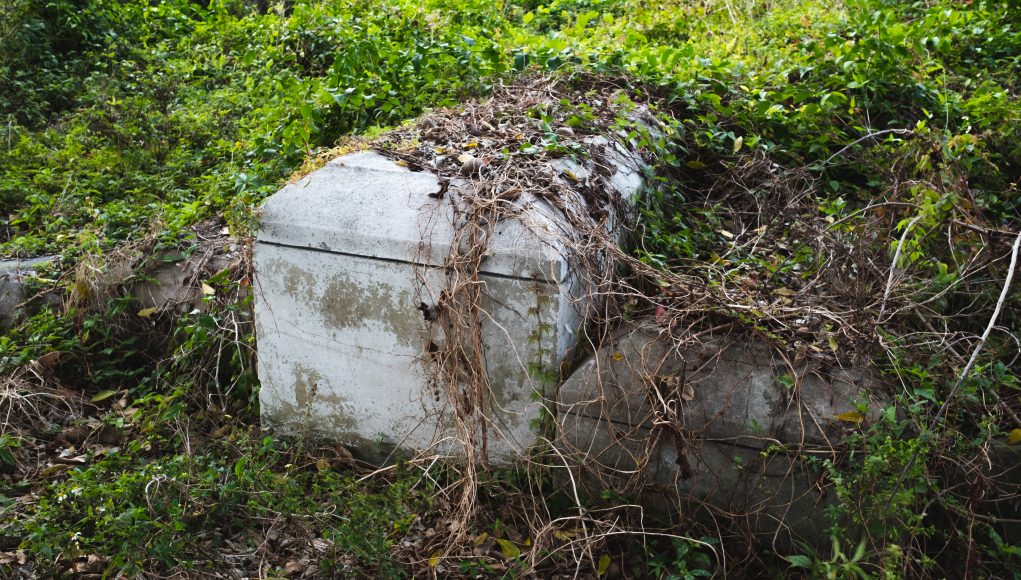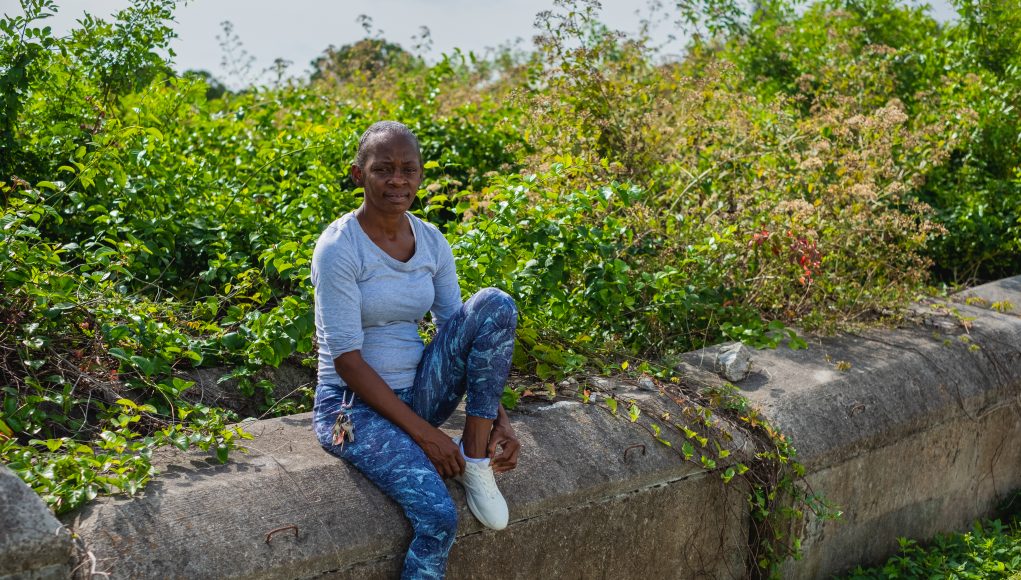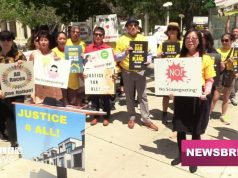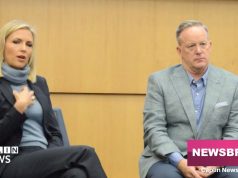Jessica Williams is thin, dark-skinned and wears white sneakers to start her day. There are rough ends at the edges of her voice, but she is still soft-spoken. She is calm, but assertive when she talks about Lincoln Memorial Park, a historic African American cemetery that she has made her home.
Its 20 acres tell a tale of Miami’s racism and disparities that have plagued the city’s African Americans for almost a century.
“This place is my heart,” Williams said, staring at the weed-filled graveyard at the intersection of NW 46th Street and 30th Avenue. “I want to clean it so bad. This is all I have.”
Williams sleeps in the park office’s back room. No one has been buried here since 2008 because there is little room for more graves and the park’s dilapidated condition scares away many families.

Miami-Dade County has issued many fines to Lincoln Memorial Park since 1996 related to paperwork issues and its poor condition —many of them while the place was overseen by Ellen D. B. Johnson, Williams’ aunt. Current open fines to the property are around $17,000, county records show. Williams inherited the graveyard and unpaid fines when her aunt passed away in 2015. She has accumulated some herself.
The fines are in litigation.
“[The county] asked me to sign it over to them,” Williams said. “They said, if I can’t maintain it, why do I need to keep it? But I know it is going to be alright. I know it is. This is all I have, you know? My family is gone. It’s all I have.”
Opened in 1924, the park is one of the few cemeteries that recall Miami’s tainted history of segregation and mistreatment of African Americans. Buried here are prominent figures of the community. Among them are D.A. Dorsey, Miami’s first African American millionaire, H.E.S. Reeves, the founder of Miami’s first black-owned newspaper, the Miami Times, and Gwen Cherry, the first African American women elected to the Florida Legislature — along with poor black workers and alleged victims of lynching.
There have been repeated efforts to clean up Lincoln Memorial over the years by folks both in the neighborhood and outside of it, but financial difficulties have with time scuttled those projects.
Williams inherited the Miami-Dade County historically designated property from her aunt, who died after battling Alzheimer’s disease. Johnson herself inherited the place in 1964 from her godfather, Kelsey Pharr, one of Miami’s first African American undertakers.
The property was maintained for decades, but fell into disrepair in the 1980s and 1990s, after Johnson fell ill. Now it is up to Williams — or a new owner if she fails — to bring its memory and legacy back to life.
“It’s peaceful, although at night it’s kind of creepy, eerie,” she said. “You don’t know if there is somebody standing there. You’re there, waiting for the trees to move.”
Williams said she laughed when her aunt told her she would inherit Lincoln Memorial in 2012. “She was going to give it to my sister, but my sister passed away.”
But she can only do so much by herself.
Williams was born in Miami’s Little River neighborhood in 1973. Her father was Jesse Williams, an Air Force veteran who died when she was five years old. She remembers her dad as a tall man. “I would sit on his lap and watch him smoke cigars.”
Her mother’s name was Faye. She worked as a private nurse for elderly people in the Brownsville area. Williams attended Miami Park Elementary. Her recollections of visiting the Lincoln Memorial Park as a child are vague and only connected with having her mom work nearby.
“When I used to go to kindergarten I used to come here and play around,” she said. “My mom used to bring me up here on a golf cart and all I wanted to do was climb the graves with my knees. She would tell me, ‘Girl!’ — I was a tomboy, and I would climb the trees and my aunt would say — ‘Girl! Get down from there!’ And I would get scrapes and she would say, “Ah-ah! You shouldn’t be there on the graves!’ She would put iodine [on my knees] and it would dry and burn.”
She moved to Minnesota as a 13 or 14-year-old to live with her brother Terrance Williams for two years, and then moved back to Miami to live with her mom. She also lived in Atlanta from her late teenage years until she was 21 years old. She later came back to Miami and has resided here ever since.
She was the youngest of her family.
“My brother’s gone, my sister’s gone, my dad and my auntie are gone,” she said, adding that she now lives with them and watches over their resting places.
Each tomb has a story to tell. The area’s past of segregation is embedded in its loam.
Malcolm Lauredo is the director of historic research at the Coral Gables Museum, which on Aug. 2, 2018 held a “restoration effort” public exhibit for the park called “Sacred Ground: The Rise, Fall and Revival of Lincoln Memorial Park Cemetery.” The exhibit showed original 1915 funeral records, photographs, maps of the site and other artifacts.
The museum originally committed to continue the restoration efforts even after the show. But only independent groups of volunteers have helped clean up the cemetery since then.
Aside from being important for black southern history, Lincoln Memorial Park is one of only three cemeteries in Miami that celebrates Bahamian tradition of using cement coffins placed above the ground.
“[In the Bahamas] the graves are over the ground because where they lived the bed water was high,” Williams said. “Back then, when they had storms, the graves would just float away.”
Most of the crypts are placed next to each other, their plaques erased with time and wind. The names of hundreds of black Americans are now lost in history.
After segregation was ruled unconstitutional and black families could live and bury their loved ones elsewhere, the cemetery started to lose its revenue. Many black families also moved north, leaving their roots behind.
A large percentage of black Bahamians who worked in Coral Gables and wealthier areas during the early part of the 20th century were not allowed to live near their employment. Many ended up with homes in Brownsville and were buried in that area, Lauredo said.
“It’s a general lack of compassion for African Americans’ resting places. [There is] no interest in Miami-Dade County to help out,” Lauredo said. “The property has been fined and fined for not being maintained. It needs more of a leadership role. It needs [from Miami Dade County] more responsibility to cultural sites.”
But Miami-Dade County has not intervened.
Lincoln Memorial Park is an example of Miami’s historical ties to racism and living proof of the city’s long-term segregation. It is a historic landmark for African Americans and it needs consistent work to be done.
The park is not only one of the first African American cemeteries in the South, but also exemplifies a public space, where black Americans come together in shared history through the graves.
“History doesn’t belong in museums. It belongs outside with the people,” Lauredo said.
Lincoln Memorial Park is constantly vandalized. Its gates remain open during the day and it is broken into at night, when unwelcome ritual practices are sometimes held. There are no security cameras or secured fences.
“Sometimes I get visitors that literally want to visit their family, other times I get weirdos,” said Williams, pointing out the remains of chicken feathers and candles on the ground next to a grave. “They can come at night or day.”
She once spotted a chicken tied up on a string, hung from a tree and lit on fire during the day.
“A lady was coming out from visiting her people and she said, ‘Something there is burning! You don’t know what’s burning?’ I looked by the building over here [one of its mausoleums] and there was the chicken.” It had smoke coming from the bottom.
“On Mother’s Day this place is packed, but then people get aggravated because they can’t find their loved ones and put flowers on them.”
Charlayne W. Thompkins, president of the Historic Hampton House Cultural Center and Community Trust in Brownsville, said Williams is doing the best she can with the resources she has. “The Lincoln Memorial Park’s condition is undignified but special because there is so much African American history.”
Thompkins, whose father is buried in the cemetery, believes the community should come together to help make a change in the park.
Dwayne Higgs is a member of the black community of Brownsville. His brother and grandmother are buried at the park. He said he has not visited the cemetery in years because its condition is depressing.
“I can’t even find their graves. The names are gone,” Higgs said.
Shirley Scott is a public transportation driver for Brownsville Middle School. Her nephew is buried in the cemetery. “[Williams] needs to reach out to the families with loved ones buried there. The kids of Brownsville Middle should learn about the history of Lincoln Memorial Park. They need to know about their ancestors because no one has really told them.”
To maintain the cemetery, Williams is asking for tools and volunteers, including landscaping engineers or engineering students. She also needs weed control chemicals, such as glyphosate.
“I’m not gonna be able to pay people to cut the grass all the time, so the chemicals will help,” she said.
She asks the community to come help more often.
“Come every weekend and put out some weeks … and I bet you we’ll see the difference.”
Williams’ dream is to make Lincoln Memorial Park a community park, where people can come in and sit with their loved ones and have a picnic. “This is a big place and it’s important to the community,” she said.
“[People] come here, and they say ‘I’m gonna do this, I’m gonna do that’ but then they don’t show up. They commit and I think they’re gonna stay true. It gets close to my heart. I’m actually waiting for them.”
Although she cannot maintain the place, she said she is unwilling to let it go.
“I had times when I wanted to quit, but I can’t, you know?” Williams said as her voice broke down and tears accumulated in her eyes. “[The cemetery] built my character up. It built me up and there’s no going back.”
Elijah Pestana contributed to this report




